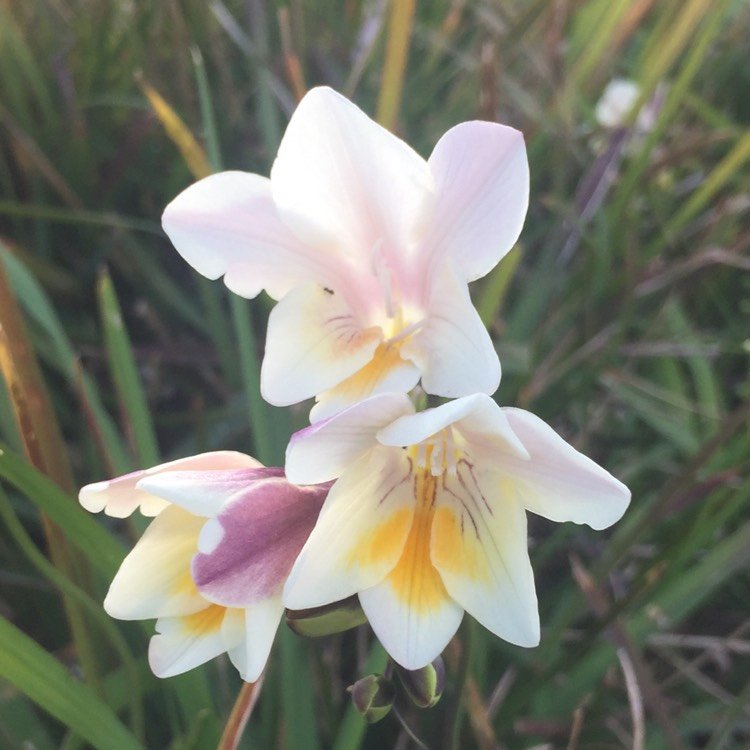

Freesia caryophyllacaea
A dainty and lesser-known species of Freesia, Freesia caryophyllacea is native to the winter-rainfall regions of the Western Cape of South Africa, where it grows on open slopes and flats in sandy or stony soils. It bears fragrant, tubular flowers in shades of cream, pale yellow, or sometimes flushed with mauve, with a delicate clove-like scent that gives the species its name. The narrow, grassy foliage and upright form make it particularly elegant in bloom.
In cultivation, it thrives in Mediterranean-style gardens and is best suited to regions with mild, wet winters and dry summers. In the U.S., it can be successfully grown in USDA Zones 9–10 outdoors, particularly in California and the Southwest, where winters are cool but not freezing. In colder areas, it performs well in pots or bulb pans under cover, where its bloom can be enjoyed up close and bulbs can be kept dry during summer dormancy.
Plant in sharply drained soil in full sun to part shade. Water during active growth (fall through spring) and allow to dry out completely once the foliage dies back. This species adds a natural charm and subtle fragrance to alpine bulb frames, Mediterranean beds, or collector’s gardens focused on South African flora.
A dainty and lesser-known species of Freesia, Freesia caryophyllacea is native to the winter-rainfall regions of the Western Cape of South Africa, where it grows on open slopes and flats in sandy or stony soils. It bears fragrant, tubular flowers in shades of cream, pale yellow, or sometimes flushed with mauve, with a delicate clove-like scent that gives the species its name. The narrow, grassy foliage and upright form make it particularly elegant in bloom.
In cultivation, it thrives in Mediterranean-style gardens and is best suited to regions with mild, wet winters and dry summers. In the U.S., it can be successfully grown in USDA Zones 9–10 outdoors, particularly in California and the Southwest, where winters are cool but not freezing. In colder areas, it performs well in pots or bulb pans under cover, where its bloom can be enjoyed up close and bulbs can be kept dry during summer dormancy.
Plant in sharply drained soil in full sun to part shade. Water during active growth (fall through spring) and allow to dry out completely once the foliage dies back. This species adds a natural charm and subtle fragrance to alpine bulb frames, Mediterranean beds, or collector’s gardens focused on South African flora.






